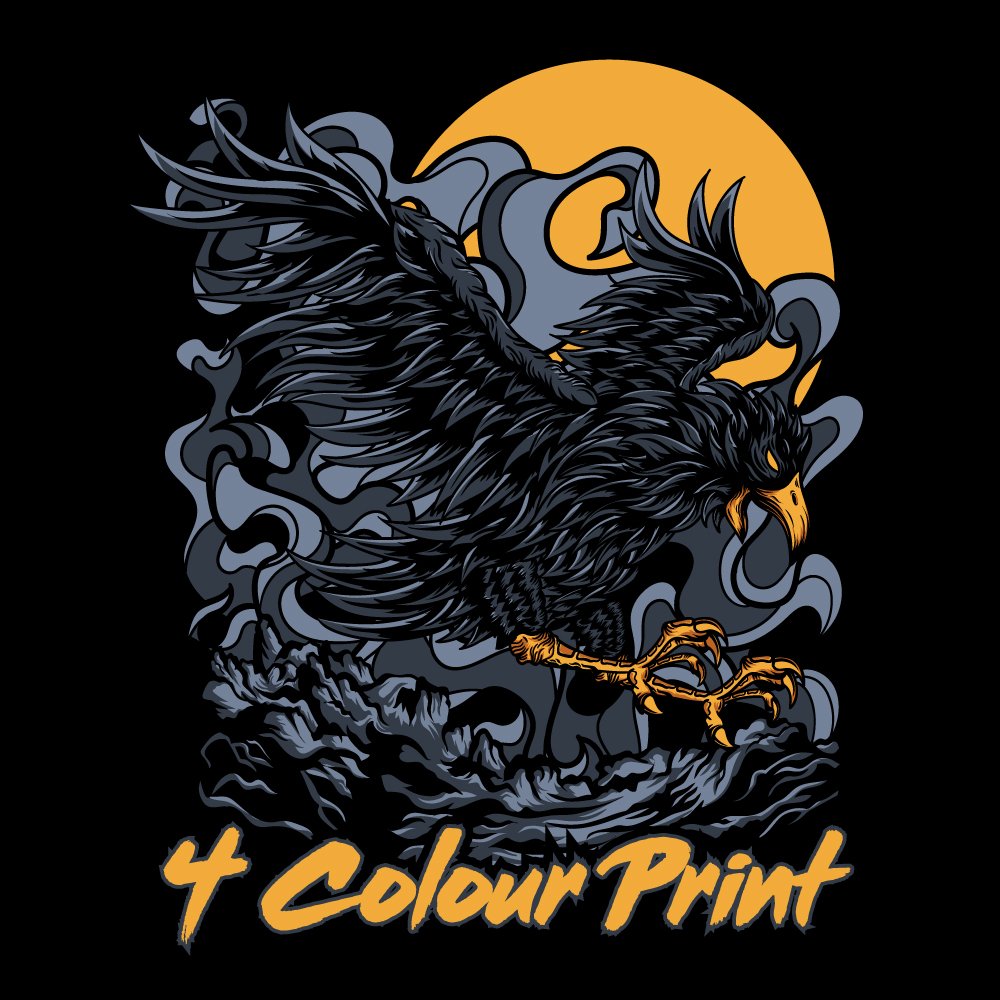PRINT SIZES, MINIMUMS AND ART SPECIFICATIONS
Print SIZE guide
SMALL UP TO 15cm x 15cm
1 COLOUR PRINT - 12 UNITS
Standard UP TO 30cm x 30cm
2 COLOUR PRINT - 24 UNITS
3 COLOUR PRINT - 38 UNITS
Large UP TO 35cm x 44cm
4 COLOUR PRINT - 48 UNITS
XLarge UP TO 38cm x 55cm
SUGGESTED MINIMUMS.
Each print requires film, screens and time to set up each print on the carousel. Essentially there is an order quantity threshold over which these setup costs become economical. After thousands of print jobs, we have created a basic guide to help calculate the minimum amount of shirts to order. These are our suggested minimums depending on the amount of colours in your design.
5 COLOUR PRINT - 72 UNITS
6 COLOUR PRINT - 100 UNITS
ARTWORK REQUIRMENTS
ARTWORK SPECIFICATIONS | GUIDELINES
ACCEPTABLE FILE FORMATS
We can accept the artwork in any of the following formats; Adobe Illustrator, Adobe Photoshop, High-Resolution 300dpi Jpegs or PNG and PDF files.
+ Artwork Guidelines for Adobe Illustrator and Adobe Photoshop.
WE DO NOT ACCEPT ARTWORK IN ANY THE FOLLOWING FORMATS.
Corel Draw, Microsoft Word, Microsoft Paint, Paintbrush, Corel WordPerfect, Powerpoint, Microsoft Publisher.
SENDING US YOUR ARTWORK
You can email your artwork to art@esponline.co.nz If your file is too large for email, we recommend using the free file transfer service wetransfer.com or drop into our showroom with your art on a USB drive.
SUBMIT YOUR IDEA, WE'LL CREATE THE ART
If you have the idea but need help turning your vision into a graphic that will be noticed, we have our own experienced designers to help. With over 15 years experience of designing for streetwear industry, our team can create original art for your organisation or brand or simply turn your sketch into a print ready design.
low resolution 72DPI INTERNET MAGES.
Most pixel based images from the web are usually 72 dpi and are near impossible to use for screen printing, unless you don’t mind that lo-fi un-readable pixelated look. 300 dpi is the minimum resolution to recreate an image on a shirt, but we just love it when we receive the artwork in a Vector format.
Click HERE to learn more about Pixels vs Vector and why 72dpi is a printers nightmare.
Zip file contains .eps .pdf and .psd design templates.
Place your design in the art layer and follow the size guides included in each template.
PANTONE® solid coated MATCHING SYSTEM.
To ensure accurate colours we use the Pantone Solid Coated colour matching system. With a library of over 1300 colours and an accurate mixing formula for each, we can provide consistent colour matching to your design. For true accuracy when it comes to choosing your colours we recommend using the official Pantone Solid Coated colour book available from leading graphic supply stores or visit our showroom to confirm your Pantone colours.
You can use this online tool to find your Pantone "C" Colour https://www.pantone.com/color-finder However it is important to note, this chart is to be used as a reference guide only. Pantone colours on computer screens will vary depending on your system.












